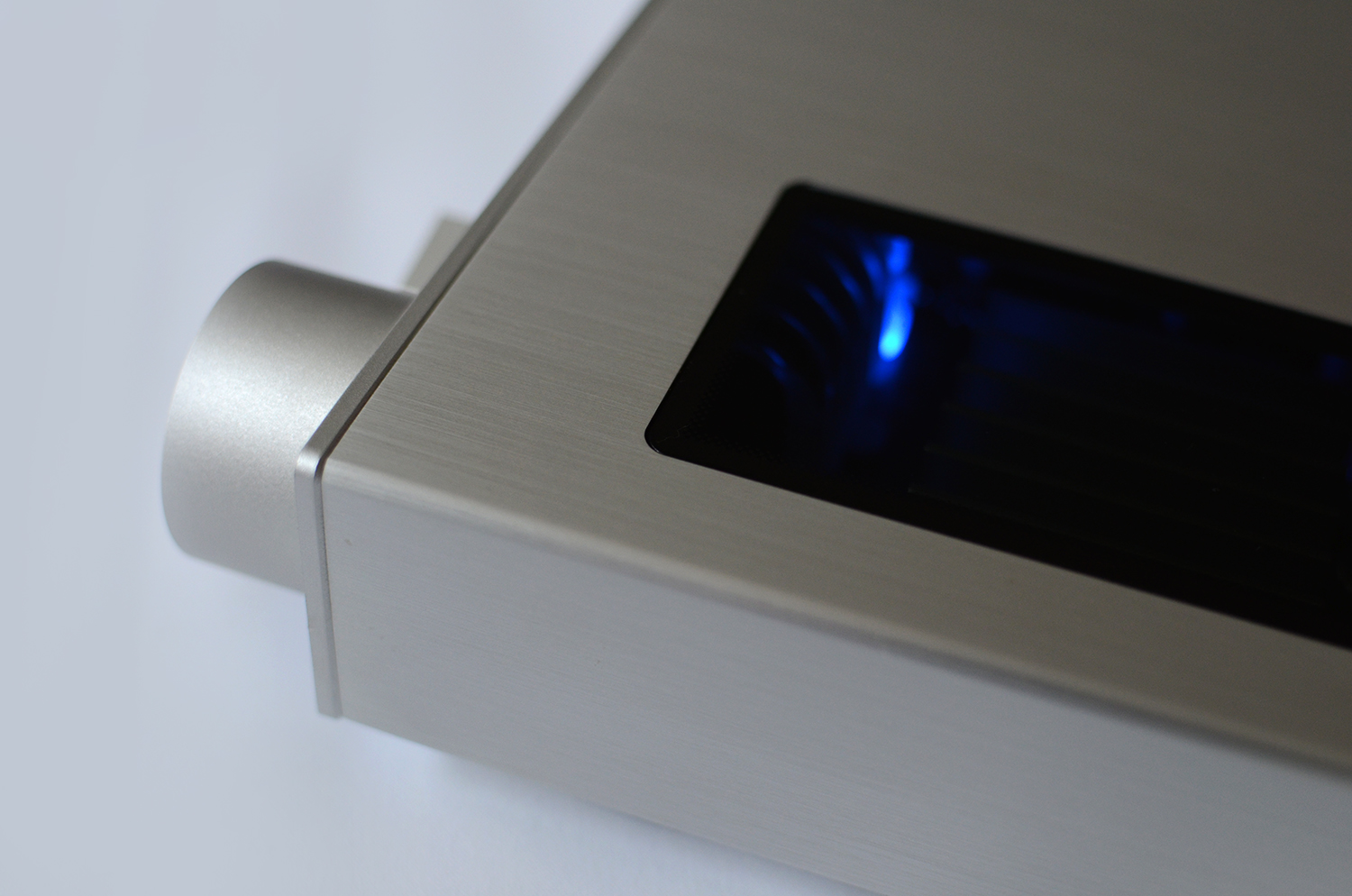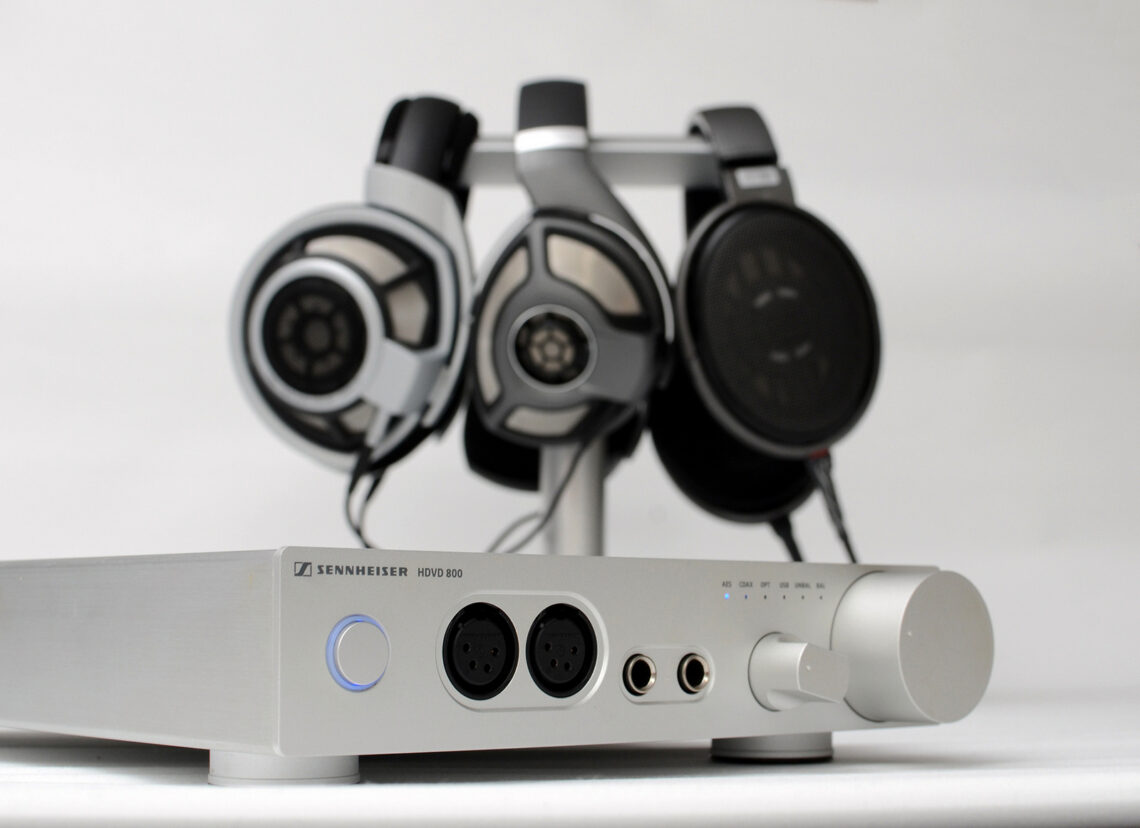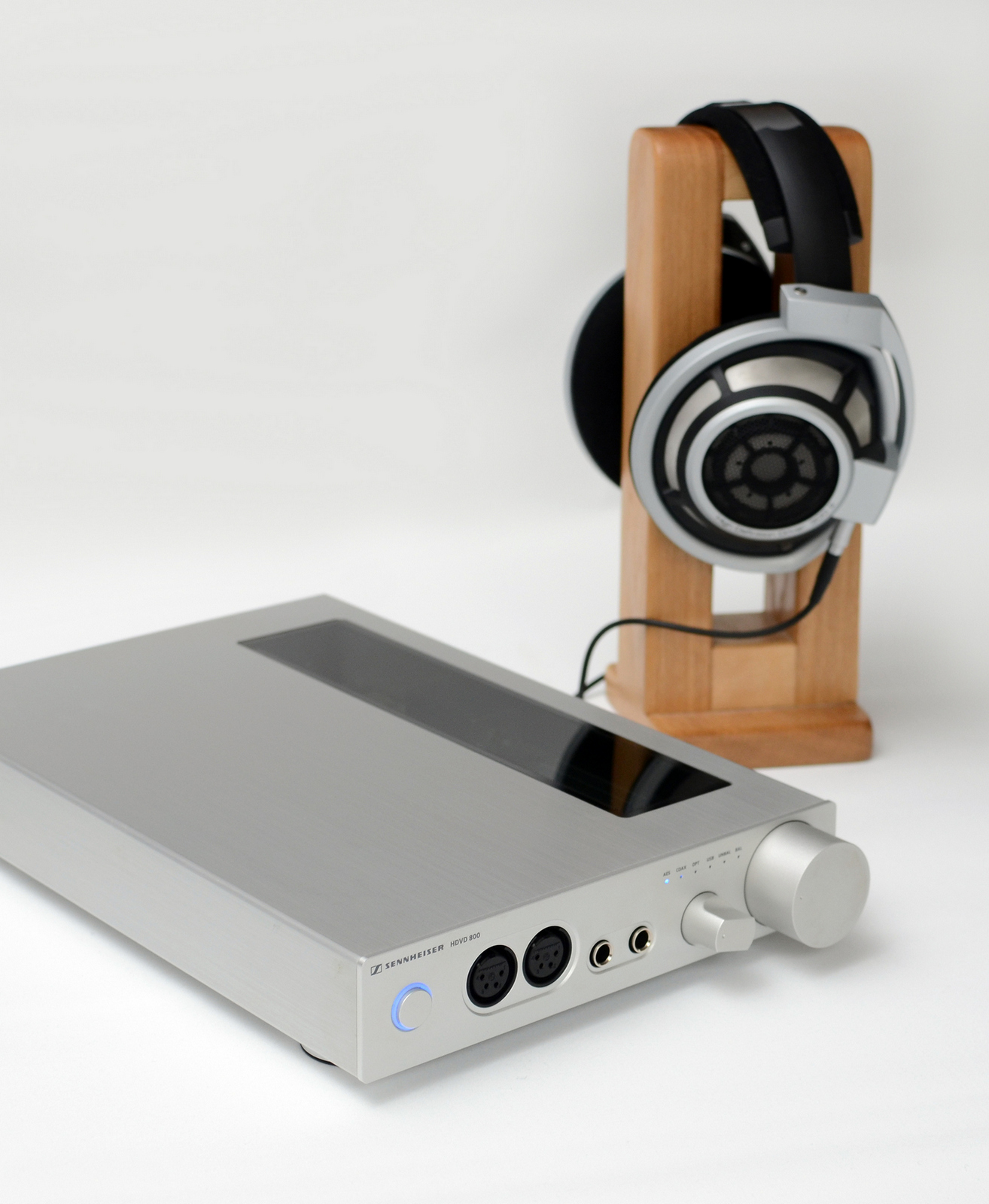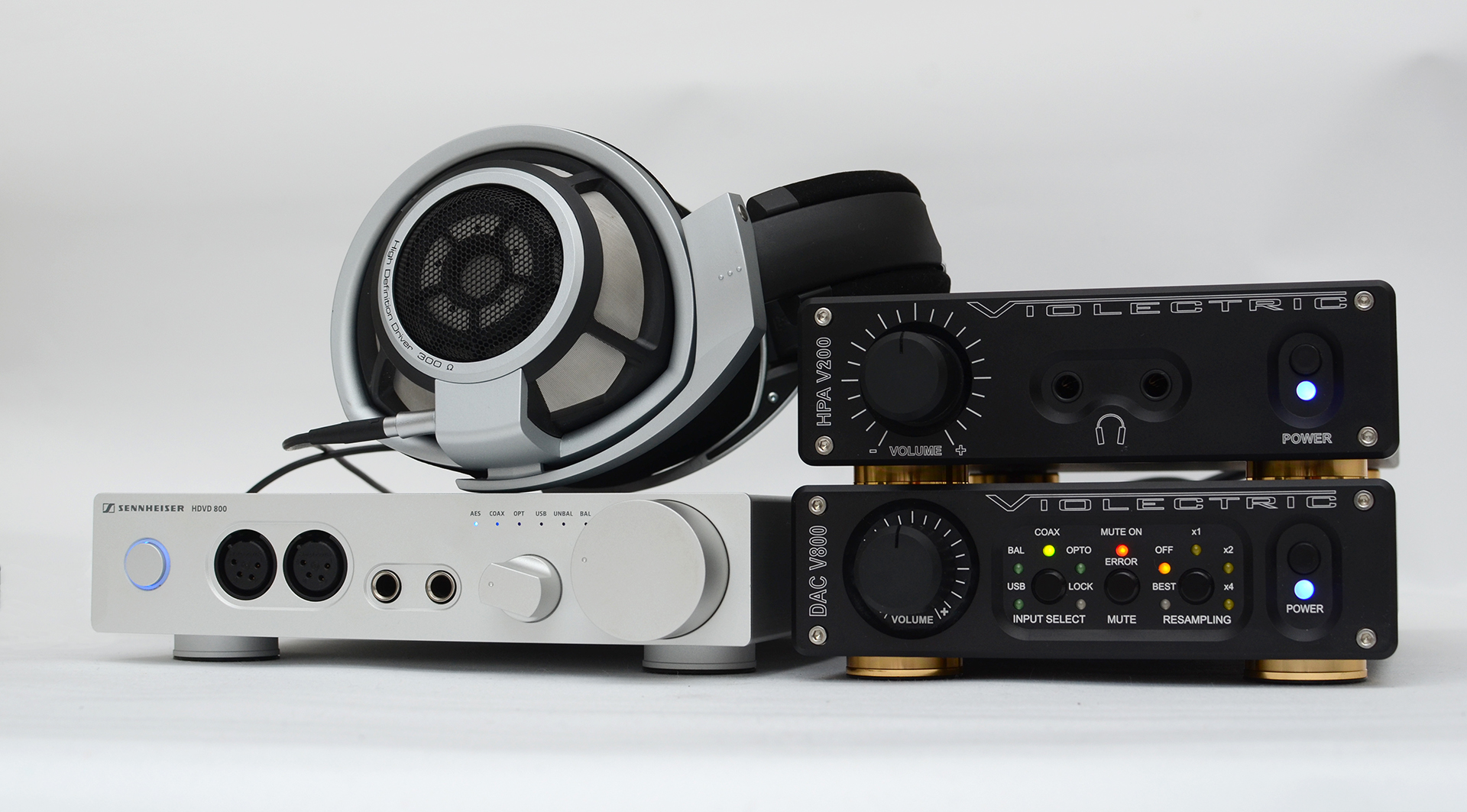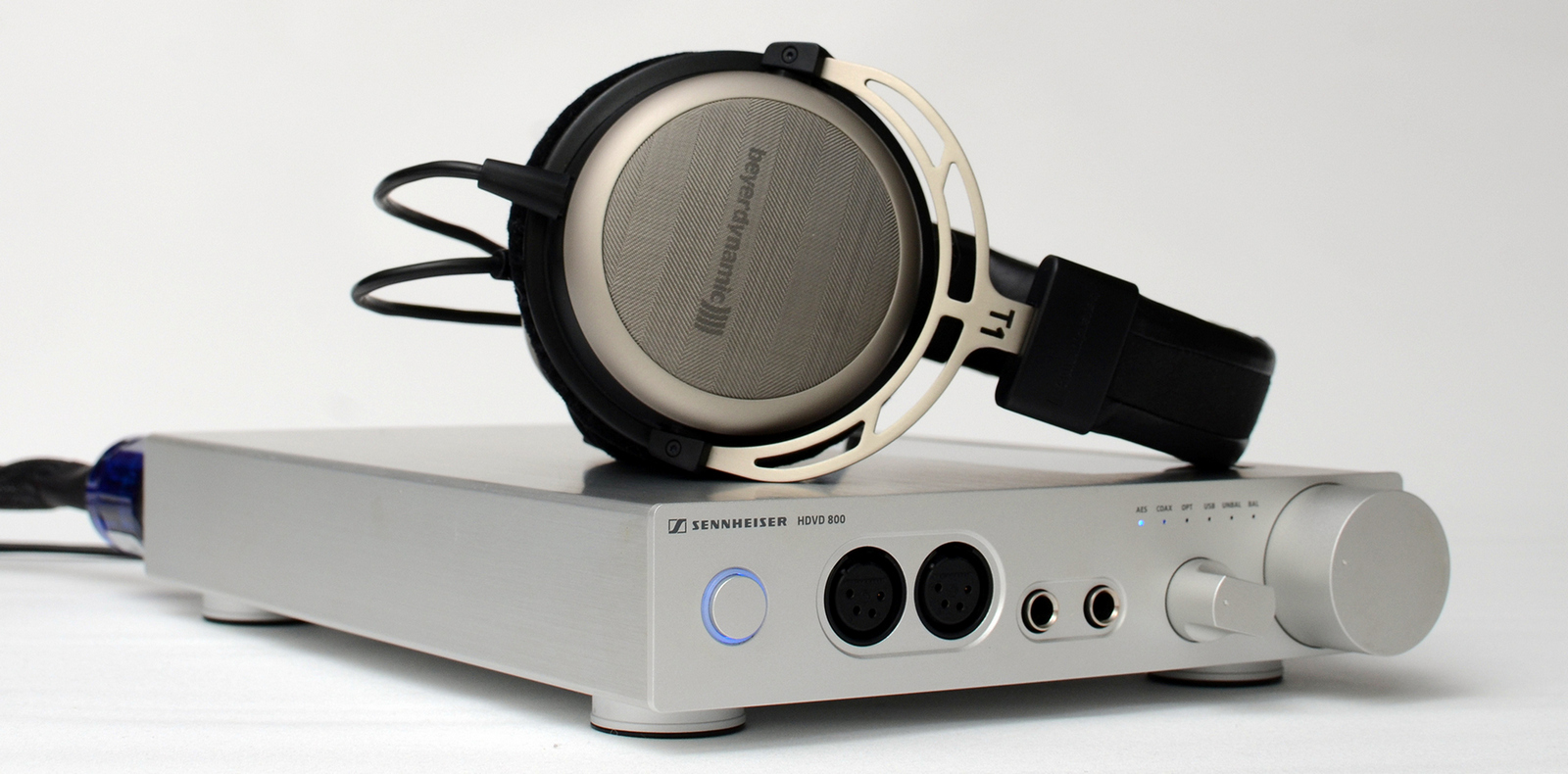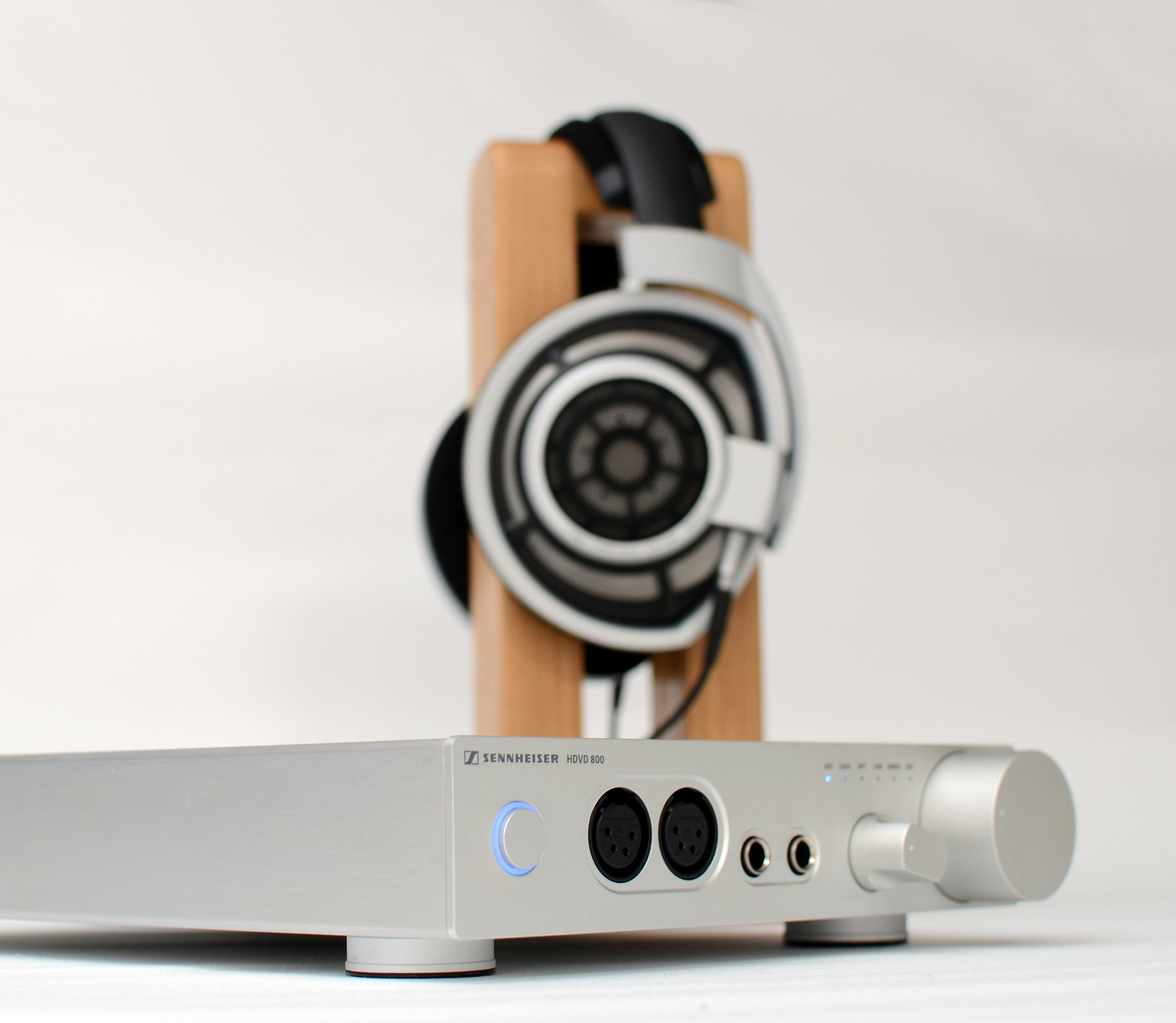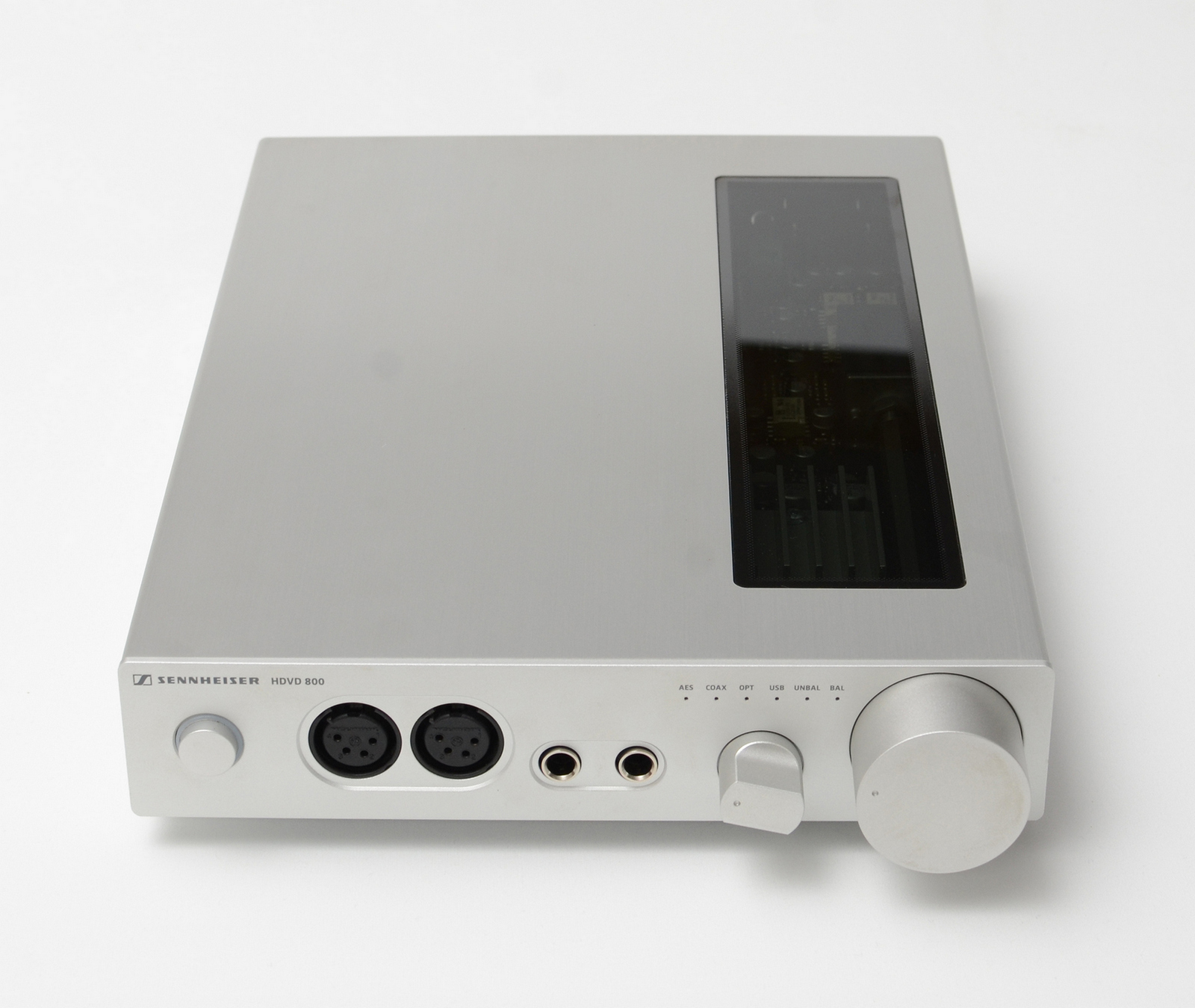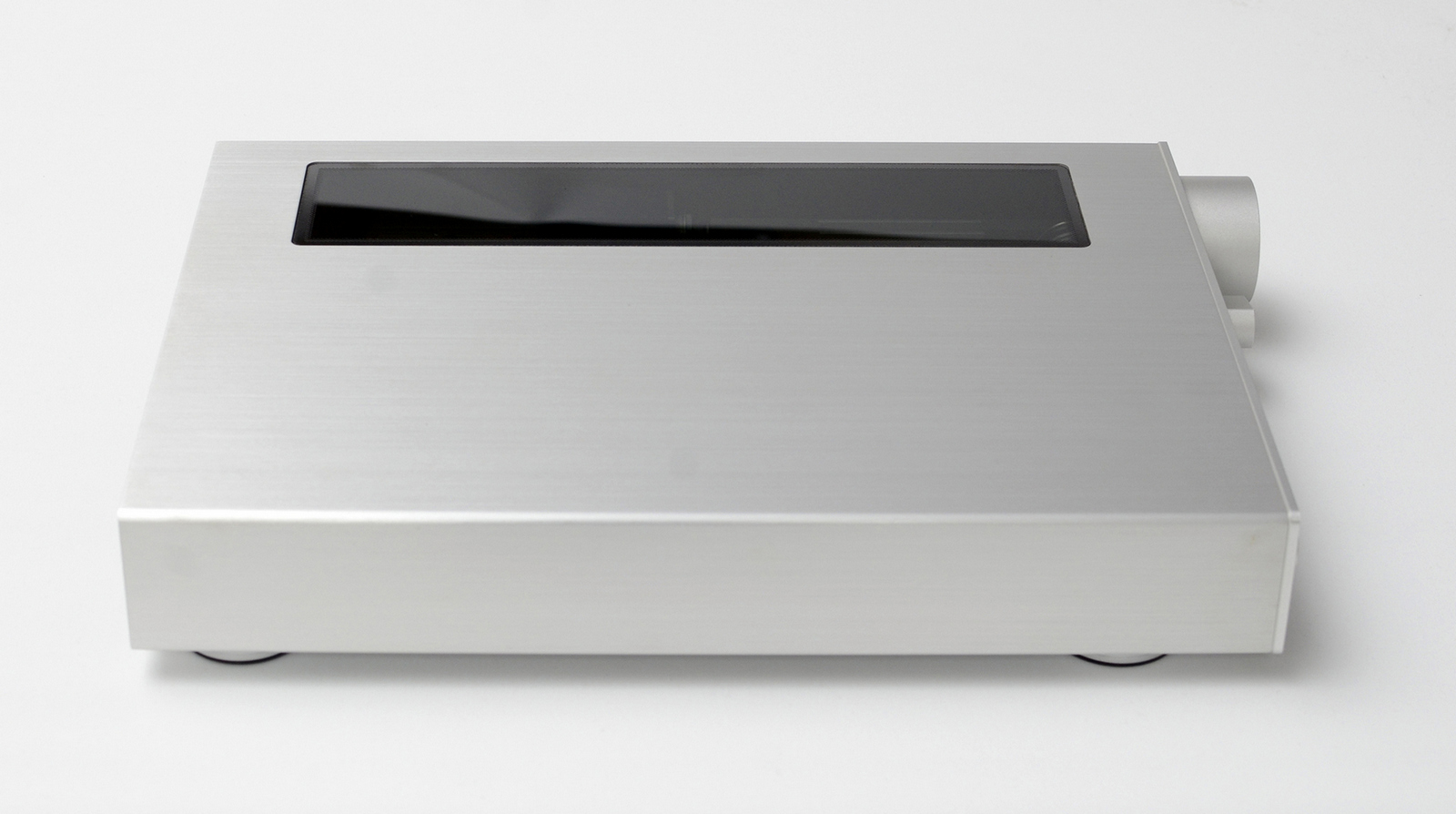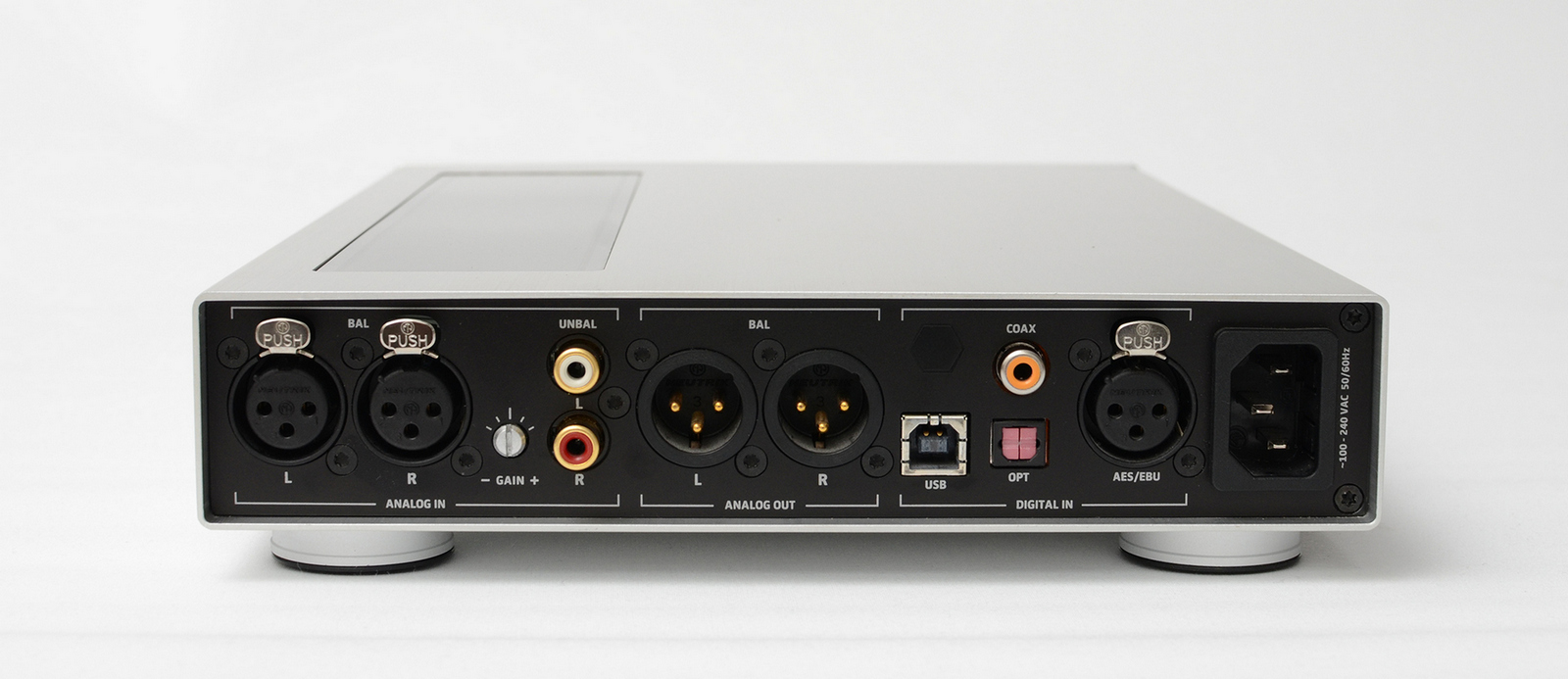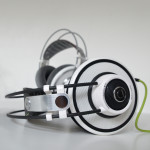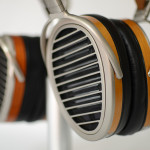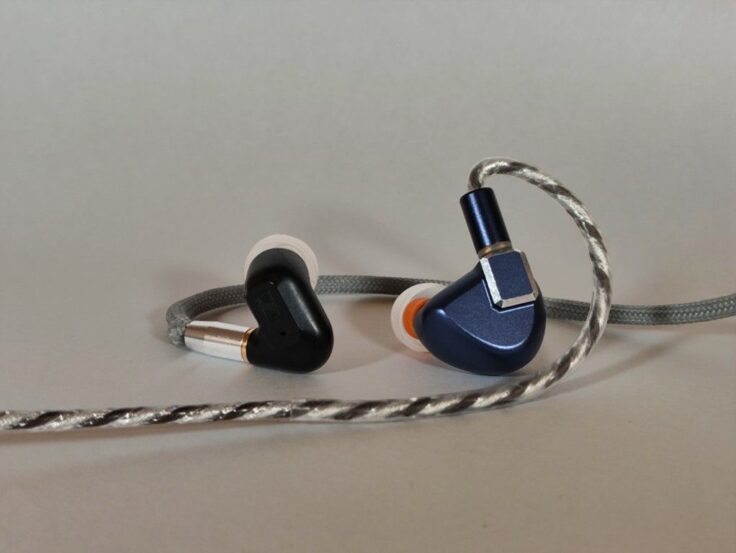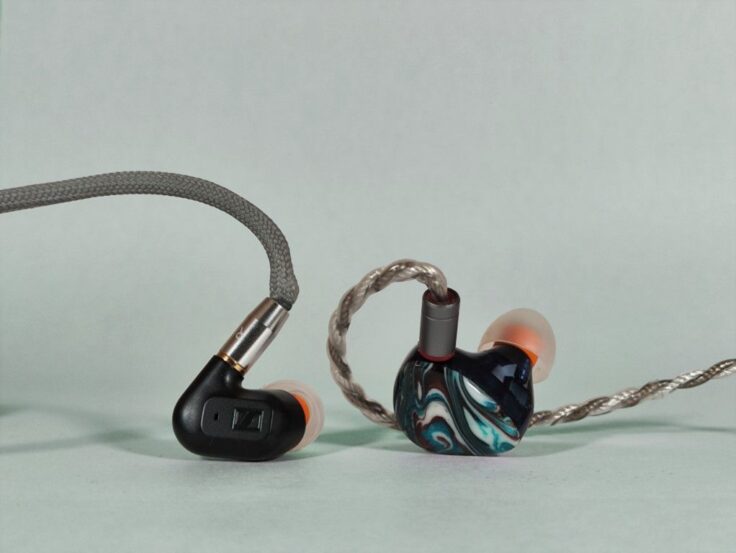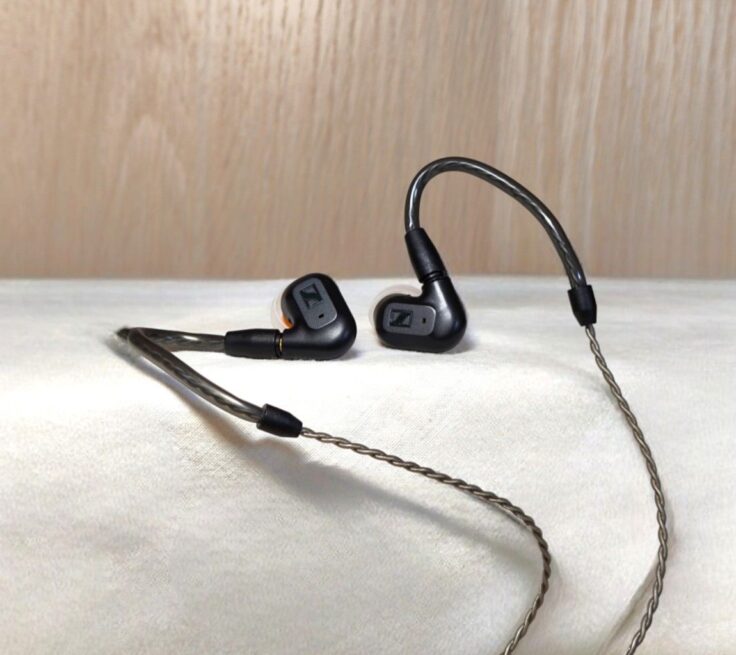Sennheiser offers two headphone amplifiers: The HDVD 800 and the HDVD 600. They look almost identical and that is no coincidence. The Sennheiser HDVD600 is a pure analog amplifier. The HDVD800 is the same amplifier, but with a built in DAC (digital to analog converter).They were launched after the HD800 headphone had been on the market for some time, and has been marketed as its ideal partner. How the HDVD 800/HDVA 600 performs as an amplifier for the HD800 compared to other relevant amplifiers I have covered in a quite extensive separate review found here.
In the following I will compare the HDVD800 as a dac-amp to the dac-amp combos I had available. Unfortunately I didn’t have any one-box solutions like the Burson Conductor, Simaudio HA230 or Oppo HA1 available. I will also test the amplifier section of the HDVD800/HDVA600 with various headphones, comparing it to some relevant amplifiers.
Update: The New HDVD 820 will be launched in August/September 2017. It will be sold alongside the HDVD 800 (ref)
Sennheiser HDVD800 vs Audio-gd Master 7+9
I start out with the big rig. The Audio-gd Master 7 DAC alone costs more than Sennheiser HDVD800, so this might be an unfair comparison but it is interesting to see how the Sennheiser performs against a setup almost twice as expensive. The Audio-gd Master 9 amplifier is slightly cheaper than the HDVA600, which is the amplifier only version of the HDVD800. Here follows my observations, track by track.
Gilimanuk – Nils Petter Molvær: With Audio-gd setup, the bass is deeper and more solid. The soundstage feels bigger. There is more air. The black is blacker, so to speak. Better holography. The sound signature however, is quite similar. They are both neutral to dark, neither is bright or harsh in any way. The Sennheiser feels a bit muffled in direct comparison. It is not bad, but the double price tag on the competitor is apparently not for nothing.
Those Thoughts – Dan Sartain: This noisy low-fi song just sounds more relaxed, gentle and refined with the Audio-gd.
Almost Like the Blues – Leonard Cohen: Same here as with the above. More refinement with the Audio-gd combo.
Winter – I , Vivaldi 4 Seasons: The difference is less apparent when the music is less complicated. This piece is mostly played by a just a few strings, violin, viola, cello. But the Audio-gd is still more nuanced.
Daddy Lessons – Beyoncé: The difference is not as striking on this track as in some of the previous experience, but again, the Audio-gd feels more relaxed in its presentation, less strained, more like a natural flow.
Holberg Suite I – 1B1 & Jan Bjøranger: Again, classical strings doesn’t make the difference as obvious. But the Audio-gd gives much more sense of depth when you really, really listen into the music. Not a striking difference at first listen, but definitely significant.
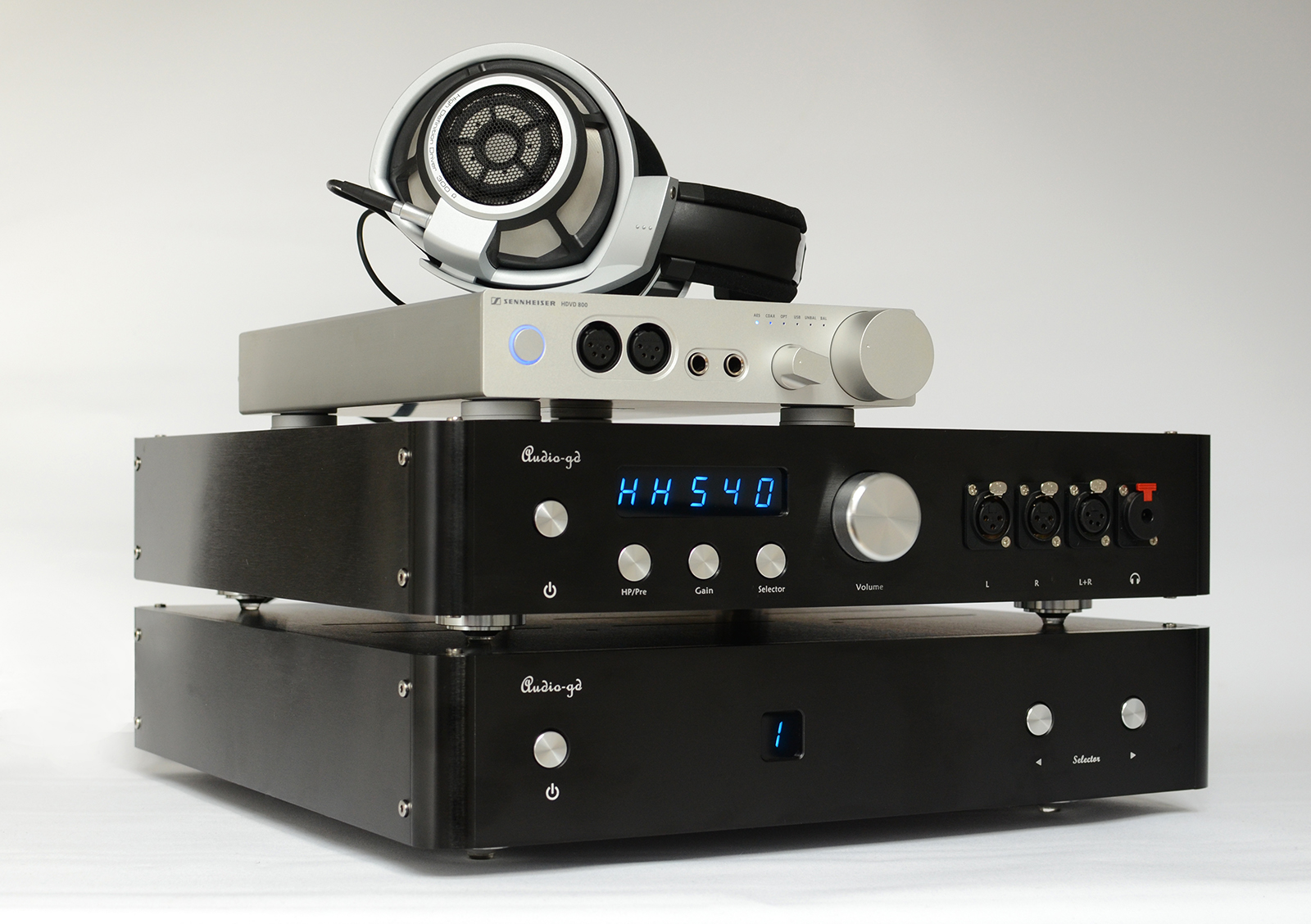
Audio-gd Master 7 DAC vs HDVD800
To check out the DAC in isolation, I connected the Master 7 to the HDVD800’s analog input and did a direct comparison to.the built-in DAC of the Sennheiser. The volume of the Master 7 was a bit higher, so I corrected it between sessions. Running through the same playlist as above, my experience was mirrored. I could have written almost the same words, though the difference was a bit less apparent than when I compared the full setup. In other words: The Master 7 is a superior DAC to the built in DAC of the HDVD800, more so than the Master 9 is a superior amplifier to the HD800. However, I must remind the reader that the cost of Master 7 is almost four times the cost of the price difference between the HDVA600 and the HDVD800. In that perspective I think the HDVD800’s DAC board does quite all right.
HDVD800 vs Hegel HD25 DAC
I like the Hegel quite a lot, it’s been my most used DAC recently. Its launch prize was at the same price point as the HDVD800, so I expected it to be a step up compared to the Sennheiser. Connecting it to the HDVD800 and comparing it to the internal DAC, the difference is certainly less noticeable than with the Master 7. The Hegel adds a bit of clarity here and there, but overall they sound surprisingly close as I browse through the same songs as I used before. I do prefer the Hegel, but by a small margin.
Sennheiser HDVD800 vs Violectric V200 + V800
The Violectric combo is to me some sort of a head-fi reference. Especially yhe V200 is a great versatile amp that makes every headphone sound good, and the V800 is a great DAC. They are also small and matching in size and looks.
Bergen Open – BMX :Switching from the Sennheiser to the Violectric makes things open up a bit. The Sennheiser feels maybe a bit “cosier”, if I dare to use that word, a bit fatter. Both are a great listen, but the Violectric rig feels more detailed. The bass feels more prominent with the Sennheiser.
Cité Tango – Gotan Project: Again, the Sennheiser presents a slightly beefier sound, the Violectric slightly more precise, the bandoneon is better textured and sharper in its tone. There is also more air with the Violectric.
Limit To Your Love – James Blake: The massive rotary sounds feels quite similar, but I tend to feel there is more presence to the voice of James Blake, there is more texture and nuance with the Violectric rig, and also more shimmer to the cymbals especially noticeable at the fade-out ending.
To identify what is caused by the DAC and what is the amp, I connect the V800 to the HDVD800, and the V200 to the output of the HDVD800. I had more difficulties noticing any significant differences between the DACs than the amps. So regardless of which DAC I listened to, the amp made the most of the difference. Basically, the differences I observed in the track by track comparison between the Violectric rig and the HDVD800 actually was quite the same when comparing the HDVD800 and the V200, regardless of the DAC used.
Conclusion
When I did my big HD800 amplification review, the Violectric V200 stood out as a great performer, especially when the price was taken into account. The HDVD800’s amplifier section is just not as good. But the DAC kept it’s own when compared to the V800, making the HDVD800 a nice all in one.
Headphone Matches
Sennheiser HD800
As mentioned before I have covered extensively how the HDVD800 works together with that HD800 in another review in comparison to the range of other amplifiers. It’s is a bit on the dark side of neutral.
Sennheiser HD700
Winter – I , Vivaldi 4 Seasons: As with the HD800 the HD700 is better focused with the V200. It is more precise, more air. The strings have better texture, the tone is sharper. Not in an edgy way, just more precise. The Sennheiser amp sounds good, but the V200 is better.
As Before – Olga Konkova: Again, the V200 is more textured, precise. The Sennheiser is maybe warmer sounding, but also a bit fuzzy. Especially the female vocals here sound more distinct and present with the V200. It also feels a bit snappier with all the percussion. Piano a bit crisper.
Mississippi Rising – Floratone: Again the V200 sounds a bit clearer, but the Sennheiser has a nice warm time on this track, it might be a tad more midbass.
Conclusion
So, generally I find the same differences with the HD700 as with the HD800.
Beyerdynamic DT1770PRO
858-2, Richter 858 – Bill Frisell: With the HDVD800 there is a very nice warmth that makes this instrumental, experimental string piece a better listen than with the V200, which gets a little clinical. The violin is so delicious with the HDVD800, with a full bodied sound.
Gilimanuk – Nils Petter Molvær: Same thing here, the trumpet is really delicious with the HDVD800, warmer and fuller than the V200. Otherwise they both perform good.
Almost Like the Blues – Leonard Cohen: With Cohen’s extremely full voice, the preference shifts. The V200 gives his voice more texture and nuance, whilst the HDVD800 gets a bit too full and loses detail.
Conclusion
The HDVD800 really was great with the Beyerdynamic DT1770PRO. It seems to push the midrange and mid bass a bit more forward.
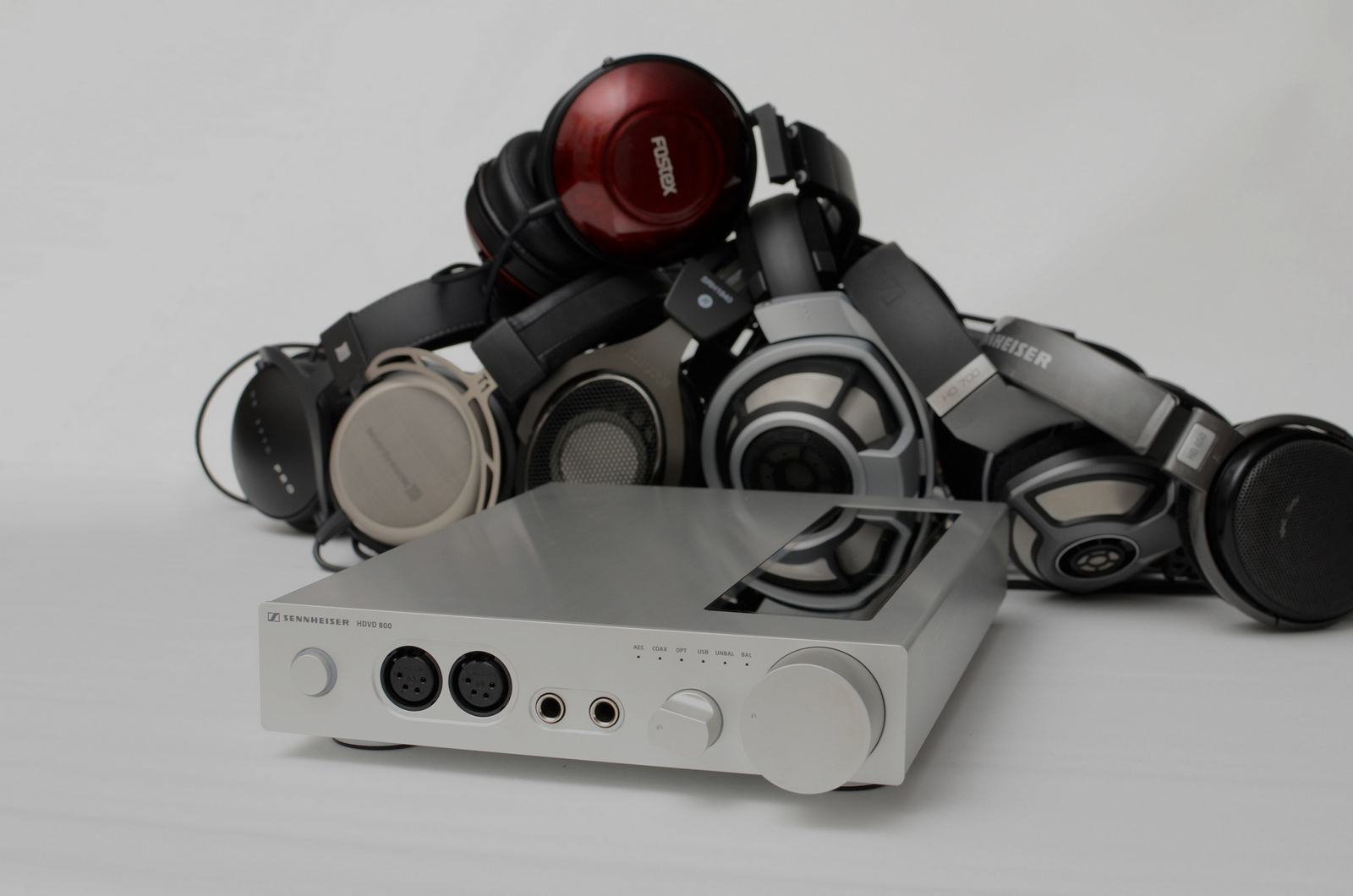
Sennheiser HD650
Almost Like the Blues – Leonard Cohen: There is more mid bass quantity with the Sennheiser amp here. Cohen’s voice a tad fuller, but with the V200 it is a bit more detailed. The HDVD800 is more intimate, V200 more reserved.
Dualist – Ola Kvernberg: Also here, the HDVD800 gives some extra meat to the bone with the bass drums as well as with the strings. The V200 is a tiny bit more polite and adds some detail.
As Before – Olga Konkova: This track reveals and grows on the extra clarity and transparency that the V200 offers. The Sennheiser sounds good, but the V200 is better.
Conclusion
The HDVD800 handles the HD650 very well. As with the DT1770PRO I notice that the mids and upper bass are a bit more upfront, at the cost of some clarity in comparison with the V200, resulting in a warmer presentation – which sometimes is delightful and sometimes a little less clear.
Beyerdynamic T1
Given the relatively high output impedance of the HDVD800, I thought it might play well with the 600 ohm Beyerdynamic T1. And it sure did. First I compared it to the Violectric V200.
Natsukashii – Helge Lien Trio: The piano is clear and satisfying, the precision is pure delight. Lots of texture. Soundstage is wonderful, image depth is top notch. This time it is the V200 that sounds a bit fuzzy in comparison.
Midnight City- M83: Everything is so tight and full of rhythm I cannot help tapping my foot on this one. Again, excellent image depth with the HDVD800. Moving to the V200 again makes me feel like I am losing out on that excellent precision and toe tapping groovy snappiness.
The Questyle CMA800R was a better amp for the HD800 when I compared it to the HDVD800, so naturally, I got curious about how they compared using the T1.
Morning Bell – Radiohead: This track really can get dry sounding with some equipment. And the T1 sounds very dry with the Questyle. The HDVD800 is better, warmer sounding with no less detail, rather on the contrary, the more relaxed presentation of the HDVD800 makes me sense more detail.
Mystical Friend – The Splendor: Again, the Questyle comes off a bit drier, a bit constrained. The HDVD800 is somehow sounding more at ease, more natural. Great spacious precision, nice warmth to the acoustic bass, lots of texture to the saxophone.
Dualist – Ola Kvernberg: The HDVD800 is simply a more pleasant and enjoyable listen. The Questyle is a good amp, but with the T1 it sounds a bit sterile.
As I get the feeling the HDVD800 might be a real winner for the T1, I dig out my precious Woo WA2, a really nice amplifier for the T1, and widely recommended for being just that.
Contemplation – Bushman’s Revenge: This slow jazzy instrumental is pure bliss on the WA2. Spacious, warm sound, lots of details. Moving to the HDVD800, things change noticeably. Things are sharper, instruments are very focused, pin-pointed. I like both presentations, but prefer the more laid back WA2. It is relaxed and full of detail and dynamics.
Can I sit next to you – Spoon: This alternative pop tune sounds better with the HDVD800, mainly because the bass is tighter and fuller here, the vocals stand out more. WA2 is great too, but this one goes to Sennheiser, its snappiness just makes this song more fun.
Hungry Ghost – Hurray for the Riff Raff: Although this song is quite similar to the previous one, I switch preferences. The vocals here are just better with the WA2, more natural.
Winter – I , Vivaldi 4 Seasons: Both are great. The HDVD800 sharper in its tone, more edge to the strings, the WA2 more relaxed, easy flowing, rounded, yet full of texture.
Conclusion
The HDVD800 is really, really a great match for my T1. Superb clarity and tightness without sounding dry, offering a full bodied sound. I cannot help but draw the conclusion that the high impedance of the T1 is helping the HDVD800 bring out its best performance. So, I had to bring out the solid state high impedance Beyerdynamic A1 amp from my closet. I always loved with the T1, as well as with the HD800 and HD650.
HDVD800 vs Beyerdynamic A1
Inspired by the great performance the HDVD800 gave with the Beyerdynamic T1, I dug out my Beyerdynamic A1 amplifier to do a comparison. The A1 is the amp that was launched six-seven years ago as Beyerdynamic’s own alternative for the original T1, and was since replaced by the more fancy looking Beyerdynamic A2, which have basically the same specs and shouldn’t be too different. I have never compared them side by side, though, and the A2 has a switchable output impedance (0 or 100 ohm) which makes it more versatile. The A1 has a fixed output impedance of 100 ohm, even higher than the HDVD800 which has 43. Not many solid state amplifiers have this high impedances.
..with the Beyerdynamic T1
Midnight City- M83: Again, I am baffled by the stunning performance of the HDVD800. It has pace, rhythm and timing, clarity and nuance, great image depth. Totally superb. This is the kind of experience and discovery that makes reviewing fun!
Going to the A1, things change quite a lot. The A1 is a good amp with the T1, in a nice and cozy way, but it is not nearly as snappy and tight as the HDVD800. Especially noticeable with the buzzing synth that kicks in at 18 seconds, there is no doubt the A1 is more laid back. But the HDVD800 manages to be clearer and tighter without sounding too crisp. And, I must add, the soundstage is superb. Just great.
Lookout for Hope – Bill Frisell: This live set includes a lot of distinct elements and easy to follow instruments in a very three dimensional way. Again, the HDVD800 is clearer with better soundstage, the A1 more laid back and not as tight.
Overgrown – James Blake: This sounds fabulous with the A1, almost supernaturally crisp and clear, yet still with nice warmth in the bass. Moving to the HDVD800, I find things to be a little less crisp this time, a bit more relaxed presentation, but not at the cost of clarity and enjoyment.
Conclusion
Overall, I find the HDVD800 to beat the A1 on its home turf, really leaving me with the clear conclusion that it is a superb amplifier for the Beyerdynamic T1. I used the original T1, but cannot imagine how I would have reached a different conclusion with the newer Beyerdynamic T1 mk2, since it is very similar and has the same driver.
…with the Sennheiser HD800
Since the A1 is out of production this is really something I shouldn’t use a lot of time on, but the previous experience made me curious about how the A1 compares to the HDVD800 with the HD800. As I listen there are clear differences.
As Before – Olga Konkova: The soundstage of the A1 feels immediately wider and more expansive. The piano also sounds fuller with the A1, slightly crisper with the HDVD800. The female voice similarly is thinner sounding with the HDVD800.
Winter – I, Vivaldi 4 Seasons – The Norwegian Chamber Orchestra: I feel the strings flow with more ease, they are more alive and natural with the A1. They have a bit more bite with the HDVD800, but sounds thinner.
Björk – Army of Me: Both amps sound great with this, the soundstage is expansive and deep with both. The A1 somehow makes Björk’s voice fuller and bigger, but otherwise they are quite similar.
Conclusion
I really didn’t intend to write out the comparison with a retired amplifier, but the sound of the A1 fascinates me. It brought something different to the HD800, with an even wider soundstage and a fuller midrange, often making me prefer it. But the HDVD800 is still capable.
…with the HD650
Dualist – Ole Kvernberg: I always have thought the A1 did a great job with HD650, and it still did. However, the HDVD800 is better at keeping the massive bass drum action under control, and it generally feels crisper with the strings and tighter in general.
Cité Tango – Gotan Project: I find them both to perform well, no real differences here.
Plane Temp – Glasser: Here, the HDVD800 comes out a tad crisper and cleaner. A1 is still clean, but a tad fuller in a favorable way, especially in the bass.
Conclusion
The A1 is in my experience a great amp for the HD650, and HDVD800 is on par or even a bit better in many ways. It makes the HD650 sound clear, open and just smooth enough.
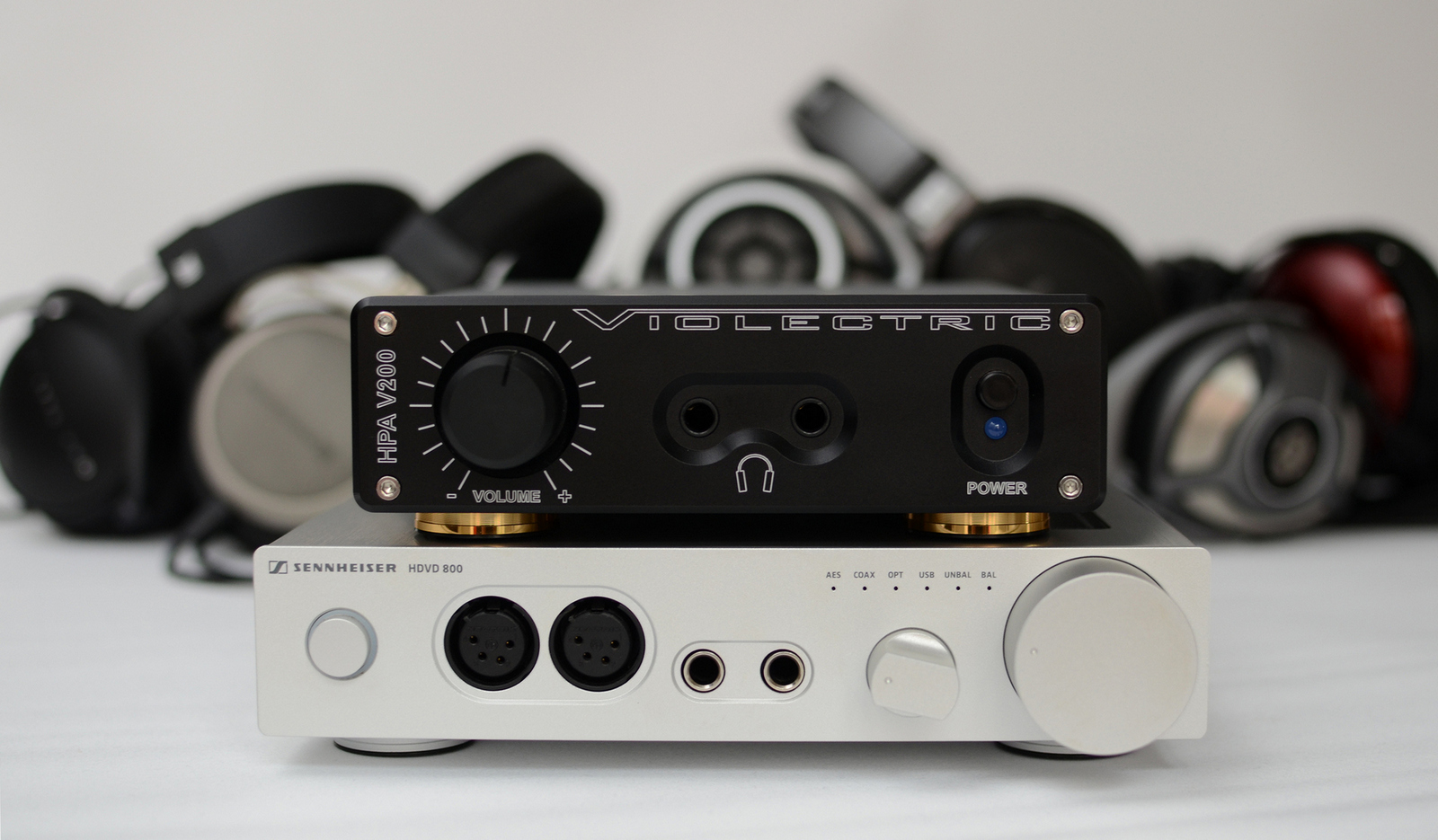
Low impedance performance
The HDVD800 is marketed as an amplifier for high impedance headphones specifically. This is because it has a high input impedance, which affects the damping factor. If the output impedance is not significantly lower than the headphone impedance, this alters the sound to some degree, often making it less clear and snappy. But of course, low impedance headphones still may sound decent when connected.
Powering the very low impedance Fostex TH900 (16 ohm) with the HDVD800 gives a totally nice listening experience, but the TH900 is noticeably thicker and more laid back sounding than with the low output impedance Violectric V200, as would be expected. However as someone who sometimes find the TH900 a bit on the bright side, this is partly a welcome change.
The medium impedance 62 ohm AKG K701, however is not nearly as over-damped on paper and doesn’t sound like that either, still compared to the V200. I find the K701 to sound very good with the HDVD800, but a little laid back.
Another medium impedance headphone is the Shure SRH1840. I don’t really notice it to be more laid back with the HDVD800 than the V200, I find them to sound quite similar.
Planar magnetic performance
Planar magnetics aren’t necessarily as bothered by output impedance dismatch as dynamic headphones, so I try out a few. First, the 35 ohm Hifiman HE-1000 mk2 sounds surprisingly good. In direct comparison to the Auralic Taurus (which is a really good amp for the HE-1000), the HDVD 800 is a bit more dynamic, spacious and detailed – but not by the margin I expected. Not by much, really. Here is a small track by track:
Ting – IPA: Going from the HDVD 800 to the Taurus sharpens things up a little bit, but not more than with the HD800, rather the opposite actually.
Slow – Leonard Cohen: Same thing here, the HDVD800 performs well.
Symphony No.2, ‘Resurrection’: III,Mahler, Paavo Järvi/hr-Sinfonieorchester: Again I struggle to find anything negative to say about the HDVD 800’s performance with the HE1000. From top to bottom of the harmonic spectrum it performs very well, despite its high output impedance.
Moving on to Audeze, the 16 ohm LCD-X, sounds a bit sounds over damped with the HDVD800. In comparison to the Taurus, it sounds a bit muted. My 50 ohm LCD-2 rev.1 sounds good, although with a bit thicker sound signature than with the Taurus. I would guess the newer version of the LCD-3 might be a decent match, given its 100 ohm impedance.
Final Conclusion
First, I found the DAC of the HDVD800 to perform quite good in my setup. The Audio-gd Master 7 was clearly superior, but it also cost a lot more. The Hegel HD25 and the Violectric V800 were roughly on the same level in my setup, and they both cost more than the premium you have to pay for taking the step up from the amp-only HDVA600. I tried the it out with USB from Windows 10 and with coax from my Squeezebox touch, and I was not able to tell the difference.
As an amplifier only, the HDVD 800/HDVA 600 is a good performer overall. For the HD 800, as I found in my big HD 800 amplifier comparison, I found the Violectric V200 and Woo WA2 amplifiers to perform even better, at comparable prices to the HDVA 600, but then you don’t get the DAC, so as an all in one piece, the HDVD 800 still is a good option. The HDVD 800 performs good with a variety of medium and high impedance headphones, and I was totally blown away with its performance with the Beyerdynamic T1.
The HDVD800 packs a good amp and a good DAC into a really sleek looking package. It has a great variety of inputs and outputs, and performs well across the board. You can get better amps, and you can get better DACs. But if you want an all in one, the HDVD800 is not a bad choice at all.
Technical Data (From Sennheiser)
Dimensions (W x H x D): approx. 216 mm x 55 mm x 324 mm
Frequency response 0.3 Hz to 100 kHz (-3 dB)
THD, total harmonic distortion < -110 dB (1 kHz / maximum gain)
Weight 2,2 Kg
Audio input Analogue input XLR-3 : Max. input voltage 20 dBV / Input impedance 10 kOhm
Analogue input RCA: Max. input voltage (eff) 14 dBV / Input impedance 10 kOhm
Digital SPDIF (RCA): Max. sampling frequency 192 kHz /AES3-compatible) / Max. resolution 24 bit
Digital SPDIF (TosLink): Max. sampling frequency: 88,2 kHz (AES3-compatible) Max. resolution: 24 bit
Digital AES/EBU (XLR-3): Max. sampling frequency: 192 kHz (AES3-compatible) / Max. resolution: 24 bit
USB (USB-B) USB standard: USB 2.0 / USB 3.0 USB audio class: USB Audio 2.0
Power consumption 9 W
Input voltage range 100-240 V AC / 50-60 Hz
